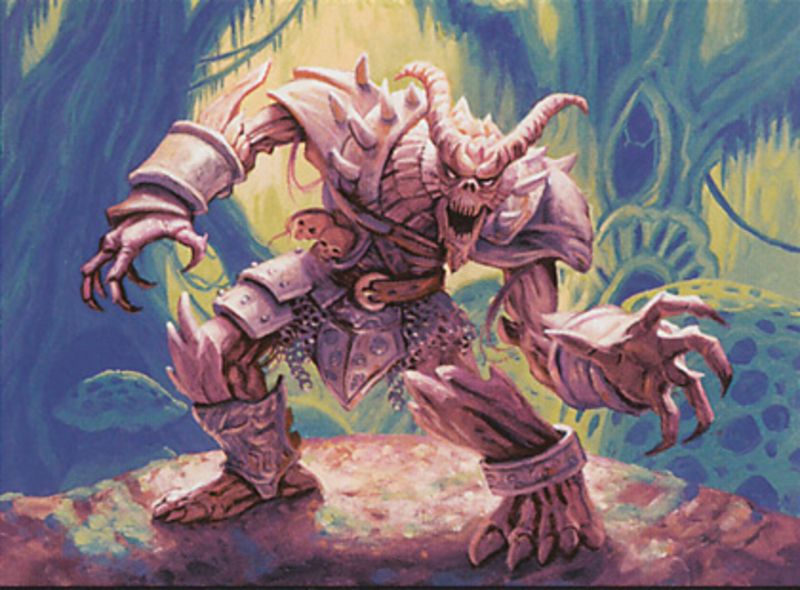A local store here in Saskatoon recently decided to attempt to start holding sanctioned Legacy events again. Before this, the only way to play Legacy in town was the full-proxy Legacy league. The in-store event, being sanctioned, of course would require everyone to own all of the cards, and everyone wanted to see if there would be enough interest to hold events like this. Having never played Legacy before, I wanted to come play both because Legacy looks awesome, and to support local events that might have a hard time firing. 14 people showed up to play Legacy, which is about how many people we usually get for a Thursday night Modern event, so pretty good for our city. There's also potential to get more people in the future, as a few people from our sister-city Regina might come up to play Legacy if there is consistently enough people. The field was more diverse then I had been expecting. I was expecting a lot of mono-coloured decks like Burn or Death & Taxes to avoid the cost of dual-lands. This ended up being partially correct, as the tournament consisted of:
- 3 Burn
- 1 Death & Taxes
- 1 Dragon Stompy
- 1 Eldrazi
- 1 GB Midrange
- 1 Grixis Delver
- 1 Jeskai Stoneblade
- 1 Jund
- 1 Manaless Dredge (it's me!)
- 1 Miracles
- 1 Mono-Black Reanimator
- 1 UB Death's Shadow
Deciding to Play Dredge
If you hadn't already guessed from the title, I ended up winning the tournament. In fact I didn't lose a single match. There were a few reasons I decided to play Manaless Dredge.
- It is one of the cheapest decks in the format.
- I already owned a large portion of the cards.
- I love playing Dredge.
- I was hoping since there wasn't really a local metagame, people wouldn't be prepared with enough sideboard graveyard hate cards.
The Deck
Manaless Dredge
Steven Indzeoski
Creatures
- 4 Balustrade Spy
- 1 Flayer of the Hatebound
- 4 Golgari Grave-Troll
- 4 Golgari Thug
- 4 Ichorid
- 4 Narcomoeba
- 4 Nether Shadow
- 4 Phantasmagorian
- 4 Prized Amalgam
- 4 Shambling Shell
- 4 Stinkweed Imp
- 3 Street Wraith
Spells
- 4 Bridge from Below
- 4 Cabal Therapy
- 4 Dread Return
- 4 Gitaxian Probe
Lands
Sideboard
- 1 Ashen Rider
- 4 Chancellor of the Annex
- 4 Contagion
- 3 Faerie Macabre
- 1 Progenitus
- 2 Unmask
One thing I've noticed with most Manaless Dredge lists online, is that they usually have 2-3 Chancellor of the Annex in the main deck, and less than 4 Balustrade Spy, and usually less dredgers. The list I built is more similar to a list I saw that had done well at a Legacy Grand Prix last year. The main deck is completely all-in on the Balustrade Spy combo, while all disruption is in the sideboard.

For those unaware of how the "combo" works, or how this deck work in general, the first thing is that you must always choose to be on the draw, because the first thing you can do in a game is draw up to 8 cards, and then discard to maximum hand size in the cleanup step. Your opponents should also choose to be on the draw, which is very unintuitive for most people. The reason for that is because if I'm on the play with Manaless Dredge, I will have 7 cards in my hand, and pass the turn doing nothing. Your opponent basically still gets to be on the play but also gets to draw a card. The first turn that you draw a card you should then be discarding either a dredge card (the bigger the dredge number the better) or preferably a Phantasmagorian. If you discard Phantasmagorian, you can then activate its ability to discard 3 cards from your hand. A lot of the time you also activate it a second time to discard 3 more cards with the first activation on the stack, for a total of 6. Generally, the only cards you want to keep in your hand are Street Wraiths and Gitaxian Probes.
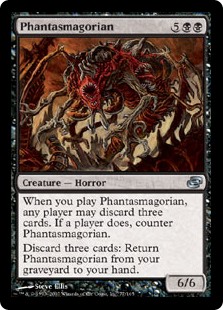
From that point on you mainly just dredge cards each draw step and dredge more with any Street Wraiths or Gitaxian Probes you happened to have in your hand. You'll also start getting back your recursive creatures: Narcomoeba, Nether Shadow, Ichorid, and Prized Amalgam. There are some more detailed play patterns but I'm not going to go into detail here. Sometimes you'll just win the game by attacking with these recursive creatures but more often in game 1 you win via the combo kill; as early as turn 2. To go off you need some number of the recursive creatures in play (as few as 1), usually some number of Bridge from Below in your graveyard (but not always), a Dread Return in the graveyard, a Balustrade Spy in the graveyard, and hopefully some number of Cabal Therapy in your graveyard to make sure the coast is clear. First you sacrifice a creature to flashback Cabal Therapy, usually naming Force of Will or Daze against a blue deck, while against other decks it's more situational. If the coast is clear you can then sacrifice 3 creatures (that you hopefully have in some combination of recursive creatures and zombie tokens) to cast Dread Return targeting Balustrade Spy. When Balustrade Spy enters play target yourself, which mills your entire library since you have no lands. This will trigger all the Narcomoebas you have left in your deck, and they will trigger all the Prized Amalgams you had left in your deck. All 4 Bridge from Belows should be in your graveyard as well assuming things are going well. You can then sacrifice 3 creatures to Dread Return targeting Flayer of the Hatebound, which deals 4 damage to your opponent. Then you sacrifice 3 more creatures to Dread Return targeting a Golgari Grave-Troll who will deal approximately 30-35 damage to your opponent thanks to Flayer of the Hatebound.

One thing that might stick out like a sore thumb to people is the 3 Street Wraiths in the deck. This should definitely be 4, as Street Wraith is one of the cards you most want to see in your opening hand. The reason I only had 3 is simply that I was unable to acquire a fourth one for the tournament. Hopefully next time I'll have a fourth, and will cut a Shambling Shell for it.

A card that is sometimes included in this deck that I chose not to play is Flame-Kin Zealot. In the many playtest games I spent learning this deck, I never once used this card. Getting back Flayer of the Hatebound is better in almost every situation, and doesn't require you to win through combat. I decided to cut Zealot for an additional dredger. If it's not clear, the reason you would Dread Return a Flame-Kin Zealot is if that Dread Return would make you a bunch of zombie tokens from Bridge from Below. Zealot pumps all the brand new tokens and gives them haste to attack immediately.

Matches
Round 1 - BG Midrange (2-0)
My opponent played a turn 1 Deathrite Shaman which could have been trouble for me, but thankfully I had a Street Wraith in my opening hand so I was able to discard a Stinkweed Imp on my turn and cycle-draw it in response to the Deathrite activation on my opponents turn. If memory serves I believe I just proceeded to beat down with recursive creatures until my opponent was dead.

For sideboarding out I was mostly just trimming things here and there, and often taking out several Gitaxian Probes. For this matchup I brought in the 4 Chancellor of the Annex to slow down any disruption my opponent might have, and the 4 Contagion to take care of Deathrite Shamans. If I remember this game correctly, I was able to Contagion an early Deathrite Shaman from my opponent, and eventually combo off with Flayer of the Hatebound as I didn't see any more graveyard hate from them.
Round 2 - Jund (2-1)
My opponent didn't do much in game 1 other than slow me down with a few discard spells. He was familiar with the inevitability of Dredge, and conceded as soon as I got my engine going.
For this match I brought in the same 4 Chancellor of the Annex and 4 Contagion as the previous round. This didn't matter though, as my opponent begun the game with a Leyline of the Void, which rendered my deck non-functional.

In game 3 my opponent mulliganed to 5 cards without finding a Leyline of the Void and decided to keep a hand with Deathrite Shaman. I had a Contagion for the Shaman and quickly took over the game.
Round 3 - UB Death's Shadow (2-1)
I honestly don't remember many details from this match. I won the first game as Dredge pretty much always does. For sideboarding I only brought in the Chancellor of the Annexes this time. It's just a good catch-all for slowing down or stopping your opponent's disruption. Game 2 I had a Chancellor in my opening hand but my opponent used a Gitaxian Probe to eat the Chancellor trigger and then played a Grafdigger's Cage on turn 1, which caused me to lose.

Game 3 my opponent mulliganed once or twice and didn't find the Cage, so I won that game.
Round 4 - Eldrazi (Intensional Draw)
Not much to say about this round. We played some Commander while waiting for the other games to finish. Sidisi for life!
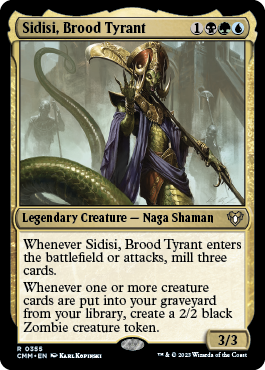
Semifinals - UB Death's Shadow (2-1)
Our ID in round 4 put the Eldrazi player into the #1 seed and myself into the #2 seed. This was great for the semifinals because as the higher seed I was able to put myself on the draw. My opponent this round was the same as round 3, and the first 2 games played out very similarly. Game 1 I did my thing. Game 2 my opponent played an early Grafdigger's Cage locking me out of the game. The difference happened in game 3 and I easily could have lost this game. Since I lost game 2 I was on the draw, and I revealed a Chancellor of the Annex from my opening hand. My opponent didn't have Gitaxian Probe this time so had to start the game with just a land and a passing of the turn. I then exiled a black card and cast Unmask, discarding my opponent's Grafdigger's Cage. This may seem somewhat bad as I hadn't discarded a dredger yet, and I was now down to 6 cards in hand. Giving your opponent 2 Time Walks is better than just losing the game though. My opponent didn't have much else left after losing the cage so 2 turns later I was able to start my engine and eventually win.
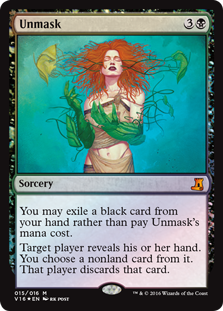
Finals - Miracles (2-0)
This round was kind of underwhelming and I feel like my opponent's draw wasn't great. The first game all that my opponent really did was cantrip a bunch and Swords to Plowshares a few things. I was able to combo off and win that game.
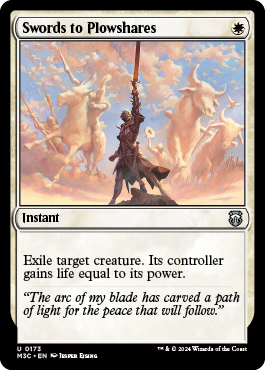
Once again all I brought in for game 2 was my 4 Chancellor of the Annex. I found out quickly that the only graveyard hate my opponent had was Surgical Extraction. This was a relief because unless my draw is really really slow, Surgical Extraction often isn't good enough. My opponent managed to Surgical Extraction all my Bridge from Belows, and then Snapcaster Mage Surgical my Dread Returns. From this point on I just beat them down with recursive creatures. I didn't actually see any Miracle cards get cast this whole match.
Conclusion
I had a ton of fun getting to play Legacy for the first time, and look forward to playing it more. As much I as enjoy Dredge, I would eventually like to get a more interactive deck as well, as with Dredge it barely feels like you're playing against your opponent. It very much felt like either they had a "slam the door" graveyard hate card and I lost, or they didn't and I won. One thing I would like to change eventually is to get the blue sideboard package a lot of people play with Force of Will and Disrupting Shoal. I look forward to playing Legacy again in September, and hope I don't warp people's sideboards too much.
